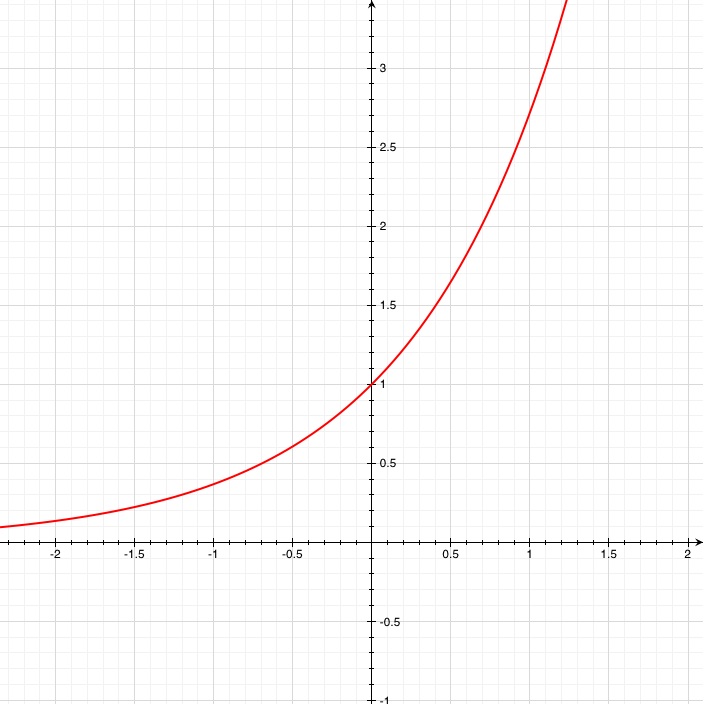Physicist: “e” shows up on its own a lot, and the frequent appearance of the natural log, ““, follows from that. Almost all of the uses and importance of e and ln are from results in calculus, but those results are so far reaching that they’ve become the standard and have worked their way into everything. If you’re in pre-calculus, or economics, or some other course that may not involve calculus directly, then chances are that you could just as easily be using log10 or log2 instead of
and it wouldn’t make much difference (as long as you’re consistent). Without calculus they’re not particularly special. However, when you start using derivatives and integrals (calculus) you find that e and the natural log are indispensable and surprisingly natural.
The derivative is an operation that takes a function, , and spits out a new function,
, that tells you what the slope of
is. ex has the remarkable property that the derivative doesn’t change it, so at every point on its graph the value of ex is also the slope of ex at that point.

Y=ex: At every point on this curve the slope is equal to the height. For example, at x=0, the height is 1 and the slope is 1 (45°).
While it may seem strange to study an operation in terms of what it doesn’t affect, this idea is the backbone of a lot of mathematics. Fixed points are tremendously important for things like chaos theory and a lot of computer algorithms, and eigenvalues and eigenspaces are about the only way to do linear algebra (which, again, is freaking everywhere).
The other stunningly important property (actually tied up with the calculus property), is that e shows up in Euler’s equation, . This property makes complex numbers useful, and leads into Fourier analysis, which is also in damn near everything.
What follows is mostly calculus.
The three most important properties of e that make it show up all the time are
1) and
2) is the derivative of itself
3)
#1 shows up every now and then. For example, the probability of something happening at least once in N tries, if it has a probability of 1/N of happening each time, is . Also, you can use it to find the actual value of e:
. But generally #2 and #3 are a lot more important.
Technically, these are all the same property, and that property is that ex can be expressed in a very particular way:
Notice that if you differentiate this using the power rule, then every term ratchets down and you end up with exactly the same thing. For example, .
Using this “self-derivative” property of you can show that
. So, when
you get a weird extra ln(A) floating around.
You can also find the derivative of :
.
But this means that the anti-derivative of 1/x is ln(x) (which is good to know) and not some other less natural logarithm. So, anytime you want to find the integral of 1 over some polynomial you’re going to see lots of natural logs.
There are more examples of e’s and ln’s showing up in calculus than there are mathematicians to express them, but long story short; what is tremendously useful in “higher” math trickles down to making an arbitrary choice in “lower” math.







10 Responses to Q: What makes natural logarithms natural? What’s so special about the number e?